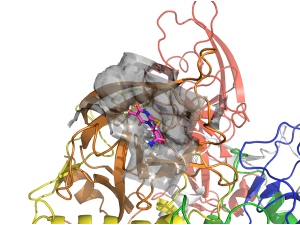- Home
- Social Action
- ★One Health Relay Report #15★
About " Hemorrhagic Fever Viruses"

Profile #15: Dr. IGARASHI Manabu, Associate Professor
Division of Global Epidemiology,
International Institute for Zoonosis Control
【Research Topics】
・Structural bioinformatics to investigate protein functions of hemorrhagic fever viruses
・Structure-based vaccine and drug designs for zoonotic pathogens
~Computational approach to identifying weak points in hemorrhagic fever viruses~
Some arenaviruses, filoviruses, bunyaviruses, and flaviviruses cause viral hemorrhagic fevers in humans. There are currently no approved therapeutics for hemorrhagic fever viruses (HFVs). Although it has been reported that some antiviral drugs such as nucleotide analogs clinically used for other viral diseases may also be beneficial against HFVs, their efficacies have not been fully confirmed and concerns about adverse effects remain. Thus, the development of effective and safe therapeutics against HFVs is crucial.
However, knowledge about HFVs is limited because handling infectious HFVs requires biosafety level 3 (BSL-3*) or BSL-4* facilities; thus, investigations can only be conducted in a limited number of specialized research institutes. Our research group has devised a method that combines in silico analysis and an experimental system that does not use infectious viruses to search for candidate antiviral compounds against HFVs.
Generally, in the viral replication cycle, viral proteins interact with other viral proteins and/or host molecules to exert their functions. Therefore, identifying viral protein interaction and/or functional sites, followed by inhibiting them with molecules, may reduce viral growth. In other words, we look for weaknesses in the virus and exploit these weaknesses as potential therapeutic target. Thus far, we have developed computational methods for predicting interaction/functional sites on viral proteins by analyzing sequence and structural information. We are also attempting to design pharmaceutical molecules that target these sites.
*BSL (biosafety level) is a standard for laboratories and facilities that handle microorganisms and pathogens. From the mildest level 1 to the most dangerous level 4.


A computer system that contains multiple GPU's Virtual screening of a library consisting of 653,312 compounds against Ebola virus
